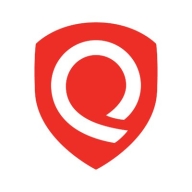

Find out what your peers are saying about CrowdStrike, SentinelOne, Microsoft and others in Endpoint Detection and Response (EDR).

Cisco Secure Endpoint is a comprehensive endpoint security solution that natively includes open and extensible extended detection and response (XDR) and advanced endpoint detection and response (EDR) capabilities. Secure Endpoint offers relentless breach protection that enables you to be confident, be bold, and be fearless with one of the industry’s most trusted endpoint security solutions. It protects your hybrid workforce, helps you stay resilient, and secures what’s next with simple, comprehensive endpoint security powered by unique insights from 300,000 security customers and deep visibility from the networking leader.
Cisco Secure Endpoint was formerly known as Cisco AMP for Endpoints.
Reviews from Real Users
Cisco Secure Endpoint stands out among its competitors for a number of reasons. Two major ones are its ability to enable developers to easily secure their endpoints with one single operation using its management console and its advanced alerting techniques.
Tim C., an IT manager at Van Der Meer Consulting, writes, "The solution makes it possible to see a threat once and block it everywhere across all endpoints and the entire security platform. It has the ability to block right down to the file and application level across all devices based on policies, such as, blacklisting and whitelisting of software and applications. This is good. Its strength is the ability to identify threats very quickly, then lock them and the network down and block the threats across the organization and all devices, which is what you want. You don't want to be spending time working out how to block something. You want to block something very quickly, letting that flow through to all the devices and avoiding the same scenario on different operating systems."
Wouter H., a technical team lead network & security at Missing Piece BV, notes, "Any alert that we get is an actionable alert. Immediately, there is information that we can just click through, see the point in time, what happened, what caused it, and what automatic actions were taken. We can then choose to take any manual actions, if we want, or start our investigation. We're no longer looking at digging into information or wading through hundreds of incidents. There's a list which says where the status is assigned, e.g., under investigation or investigation finished. That is all in the console. It has taken away a lot of the administration, which we would normally be doing, and integrated it into the console for us."
Qualys Multi-Vector EDR is designed for real-time threat detection and response, offering comprehensive visibility into potential security breaches across endpoints.
This solution integrates seamlessly with other Qualys modules, facilitating automated workflows that streamline incident management and enhance efficiency in monitoring and mitigating cyber threats. With features like real-time monitoring, detailed reporting, and proactive alerting, security teams can quickly identify and address vulnerabilities. While appreciated for its scalability and ease of deployment, users suggest improvements in integration, reporting, and configuration to further enhance its capabilities.
What are the key features of Qualys Multi-Vector EDR?Qualys Multi-Vector EDR is implemented across industries such as finance, healthcare, and retail, where real-time threat detection and automated response are critical. Its ability to integrate with existing systems and provide detailed reporting makes it a valuable asset for enhancing cybersecurity measures in diverse environments.
We monitor all Endpoint Detection and Response (EDR) reviews to prevent fraudulent reviews and keep review quality high. We do not post reviews by company employees or direct competitors. We validate each review for authenticity via cross-reference with LinkedIn, and personal follow-up with the reviewer when necessary.